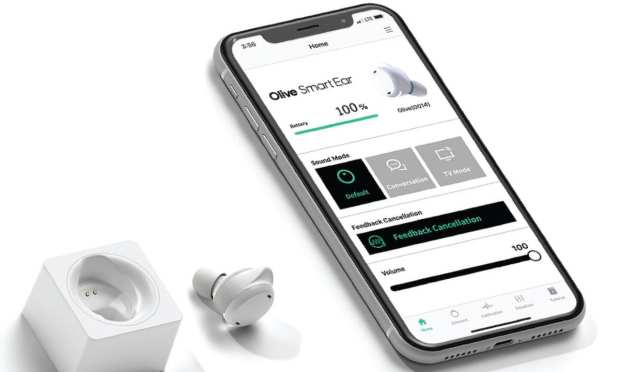Connected Tech Overcomes Hearing Aids Stigma

According to government estimates, hearing aids are needed by 25 percent of those aged 65 to 74 and up to 50 percent for those 75 and older. In all, about 28.8 million U.S. adults could benefit from using hearing aids.
And yet, the figures also show, far fewer people wear hearing aids than need them. Among adults aged 70 and older with hearing loss who could benefit from hearing aids, fewer than 1 in 3 (30 percent) have ever used them. Even fewer adults aged 20 to 69 (approximately 16 percent) who could benefit from wearing hearing aids have ever actually worn one.
So why are so many people walking around increasingly less able to hear the world around them as they age? Two main reasons, Olive Union Chief Financial Officer Edward Hall told PYMNTS in a recent conversation: cost and aesthetics.
“When we’ve done market research or looked at various studies by others in the industry, affordability and design stigma are actually the two most frequently cited reasons why people with mild or medium hearing loss who would benefit from a device don’t have one,” Hall said. “They don’t want to be perceived as wearing a hearing aid because they aren’t that old. A lot of people with mild and moderate hearing loss are still in their forties and fifties, for example, and the design is an issue for them.”
Olive Union is a hearing aid manufacturer and direct-to-consumer (D2C) retailer trying to solve two things: a lack of innovation in the market and a lack of education among consumers. For example, most people with hearing loss don’t need traditional hearing aids. But they can improve the quality of life for those consumers and maybe even slow hearing loss for the future. According to Hall, Olive’s existing technology and digital therapies can become solutions for most of those with some degree of hearing loss.
There are options out there that work incredibly well, he said, but they are extremely “medical” looking devices with price tags of $4,000 to $6,000 that, in most cases, are not covered by medical insurance. This is a major problem in the market, he said, given that the technology exists to build something small, sleek and affordable that people won’t mind their friends seeing them wearing.
Olive Union’s device fits into the category of hearing enhancements classified as sound-amplification products (PSAPs), which increase the volume of all the sounds in a given environment and can be adjusted via an app. Among these are “hearables,” loosely defined as Bluetooth earbuds with some hearing-aid-like features.
For example, Olive’s Smart Ear is sold as a nonmedical PSAP. But a newer version, the Olive Pro is a wireless earbud and a Food and Drug Administration (FDA)-certified smart hearing aid and is slated to hit the market in July. Moreover, the addition of modern technology to hearing aids, he said, can do more than make hearing aids sleeker and more affordable — with the addition of things like 5G connectivity and artificial intelligence (AI), they can also become more functional for their wearers.
The company recently closed a $7 million Series B funding round. “When we think of how we’re going to dedicate R&D funds from our most recent fundraise, the 5G and AI aspect of this, a lot of that is going into this area of using AI to do therapeutics and predictive diagnostics based on people’s hearing profiles in there and their hearing activities,” he explained. “How people use the app and how they tune their devices and so forth, all that data can be used to predict their future — hearing changes or other things.”
Hall said he’s optimistic about research going on in the US medical community, some of which uses information gathered from people’s hearing behaviors and uses AI to build more tech-based solutions.
Such solutions boost people’s ability to hear and screen the sound to turn the TV up and fade the background noise as needed. Or hearing aid ear buds that interact directly with one phone via Bluetooth so the wearer doesn’t have the discomfort of pressing a phone to the ear while there is a hearing aid in it.
Because, Hall said, there are a lot of ways to modify and upgrade hearing aid technology to make it more in line with the needs of 21st-century consumers and more likely to be worn by those who actually need them than they are today.
“The physical design of the Olive Pro is like an ear bud, headphone type of device. It doesn’t look at all like a traditional hearing aid and it’s designed to be used as part of their day-to-day lives,” he said.
